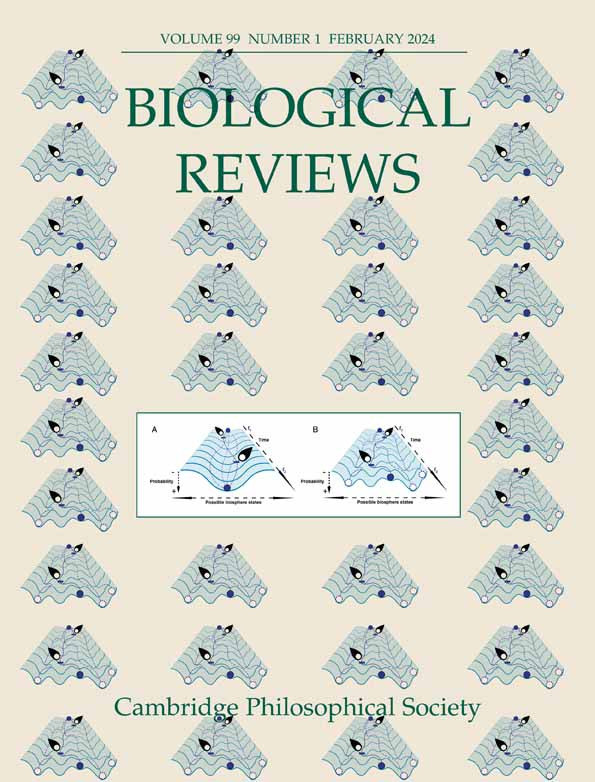地平线上的麻烦:通过未来思维预测生物入侵。
摘要
预测未来的生物安全威胁以防止其发生,是管理外来入侵物种最具成本效益的策略。然而,生物入侵是一个复杂、高度不确定的过程。高度不确定性促使决策从战略预防措施转向旨在入侵后管理的行动成果。预防性措施在遏制生物入侵方面的有限成功反映了这种短期心态,决策者应运用战略前瞻性思维来想象生物安全威胁最小化的未来。在此,我们将对四种主要的未来思维工具(环境扫描、驱动因素测绘、前景扫描和情景规划)进行评估,这四种工具分别描述了可能的、可能的、似是而非的和可取的未来,以评估它们在支持应对生物入侵的研究和政策方面的潜力。环境扫描包括调查现有数据源,通过了解生物入侵的可能性或后果的变化,发现新出现的外来物种的信号。有几种方法被广泛用于生物安全,包括数字媒体自动扫描、基于共识的专家评分和预测市场。由于自动系统会产生大量 "噪音",因此在检测微弱信号方面可能表现不佳,而专家评分则依赖于先前的知识,因此无法识别未知的未知因素。驱动因素绘图法利用专家共识来确定影响未来的政治、经济、社会、技术、立法和环境力量,是战略展望的一个重要组成部分,但很少应用于生物入侵。将这一方法扩展到绘制系统地图以确定生物安全干预措施在哪些方面可能最有效,以及探索驱动因素综合体以确定影响生物入侵未来的大趋势,都具有相当大的潜力。地平线扫描是对潜在威胁和未来发展的一种系统性展望,目的是探测当前思维边缘存在的新问题的微弱信号。应用主要集中在与生物安全和入侵科学相关的研究和技术挑战方面的新问题。然而,这些新出现的问题大多已在当前的研究中广为人知。由于地平线扫描建立在专家共识的基础上,因此需要更充分地接纳文化、性别和学科的多样性,以确保参与者能够直观地思考问题,并跳出自己的学科界限。情景规划构建了故事情节,描述了政治、经济、社会、技术、立法和环境状况在未来可能发展的其他方式。生物入侵情景规划偏向于结构化方法,如标准化原型和不确定性矩阵,但也可以通过使用焚烧、反向预测或因果分层分析等方法来应用更直观的思维。生物入侵方面的未来思维还没有与决策者或其他利益相关者充分互动,因此,在政策和管理优先事项方面取得的成果较少。迄今为止,针对生物入侵的战略展望都是孤立地应用每一种方法。然而,让不同的利益相关者参与探索与生物入侵有关的可能的、有可能的、可信的和可取的未来的综合未来思维方法,对于在国家和全球范围内开展生物安全战略展望至关重要。

Anticipating future biosecurity threats to prevent their occurrence is the most cost-effective strategy to manage invasive alien species. Yet, biological invasions are complex, highly uncertain processes. High uncertainty drives decision-making away from strategic preventative measures and towards operational outcomes aimed at post-invasion management. The limited success of preventative measures in curbing biological invasions reflects this short-term mindset and decision-makers should instead apply strategic foresight to imagine futures where biosecurity threats are minimised. Here, four major futures thinking tools (environmental scanning, driver-mapping, horizon scanning, and scenario planning) that describe probable, possible, plausible and preferable futures are assessed in terms of their potential to support both research and policy addressing biological invasions. Environmental scanning involves surveying existing data sources to detect signals of emerging alien species through knowledge of changes in either the likelihood or consequences of biological invasions. Several approaches are widely used for biosecurity including automated scans of digital media, consensus-based expert scoring, and prediction markets. Automated systems can be poor at detecting weak signals because of the large volume of ‘noise’ they generate while expert scoring relies on prior knowledge and so fails to identify unknown unknowns which is also true of prediction markets that work well for quite specific known risks. Driver-mapping uses expert consensus to identify the political, economic, societal, technological, legislative, and environmental forces shaping the future and is a critical component of strategic foresight that has rarely been applied to biological invasions. Considerable potential exists to extend this approach to develop system maps to identify where biosecurity interventions may be most effective and to explore driver complexes to determine megatrends shaping the future of biological invasions. Horizon scanning is a systematic outlook of potential threats and future developments to detect weak signals of emerging issues that exist at the margins of current thinking. Applications have been strongly focused on emerging issues related to research and technological challenges relevant to biosecurity and invasion science. However, most of these emerging issues are already well known in current-day research. Because horizon scanning is based on expert consensus, it needs to embrace a diversity of cultural, gender, and disciplinary diversity more adequately to ensure participants think intuitively and outside of their own subject boundaries. Scenario planning constructs storylines that describe alternative ways the political, economic, social, technological, legislative, and environmental situation might develop in the future. Biological invasion scenario planning has favoured structured approaches such as standardised archetypes and uncertainty matrices, but scope exists to apply more intuitive thinking by using incasting, backcasting, or causal layered analysis. Futures thinking in biological invasions has not engaged with decision-makers or other stakeholders adequately and thus outcomes have been light on policy and management priorities. To date, strategic foresight addressing biological invasions has applied each approach in isolation. Yet, an integrated approach to futures thinking that involves a diverse set of stakeholders in exploring the probable, possible, plausible, and preferable futures relating to biological invasions is crucial to the delivery of strategic biosecurity foresight at both national and global scales.

 求助内容:
求助内容: 应助结果提醒方式:
应助结果提醒方式:


